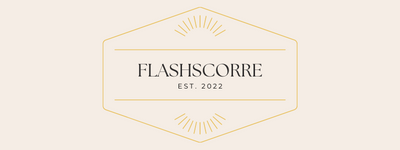In a world were environmental concerns are taking center stage, many are seeking ways to tread lightly on the planet while staying within budget. For first-time eco-conscious shoppers, the journey to sustainability can feel overwhelming—especially when faced with a myriad of choices and frequently enough high price tags. However, embracing a greener lifestyle doesn’t have to equate to financial strain.This article serves as a guiding light, illuminating affordable and sustainable swaps that not onyl benefit the Earth but also your wallet. Join us as we explore practical alternatives that make eco-pleasant living accessible and enjoyable for everyone, from everyday items to more thoughtful purchases. It’s time to cultivate habits that nurture both you and the planet, proving that sustainable choices can be both achievable and budget-friendly.

Exploring Eco-Friendly Alternatives for Everyday Essentials
Transitioning to an eco-friendly lifestyle doesn’t have to break the bank. Many affordable alternatives for everyday essentials are not only kinder to the habitat but also to your wallet. Start with simple swaps like switching from conventional plastic bottles to **reusable stainless steel or glass** containers. These durable options substantially reduce plastic waste and keep your beverages fresh without the harmful leaching of chemicals. Additionally, consider opting for **bamboo toothbrushes** rather of traditional plastic ones. Bamboo is a renewable resource, and these toothbrushes decompose much more easily than their plastic counterparts, making them a great choice for both your smile and the planet.
Another easy area to explore is personal care products. Instead of purchasing chemically loaded disposable razors, look for **safety razors** that come with replaceable blades. they offer a closer shave while cutting down on plastic waste. In the realm of menstrual products, **reusable cloth pads** and **menstrual cups** are excellent choices, providing long-term savings and reducing monthly waste. For cleaning supplies, consider making your own solutions using **vinegar, baking soda**, and **essential oils** rather of buying pre-packaged, chemical-laden products. Not only dose this save money,but it’s also a fun way to experiment with natural cleaning methods that are safe for your family and the environment.

Budget-Friendly Tips for Choosing Sustainable Products
Embarking on a quest for sustainable products doesn’t have to drain your wallet.Start by evaluating what you already own; you might be surprised by how many items can be repurposed or used longer than you initially thought. Consider doing your research before making a purchase by checking out local thrift stores, which often stock gently used goods at a fraction of the original price. Additionally, explore community swap events where you can trade unwanted items for something new-to-you without spending a dime. Your journey towards sustainability begins with thoughtful consumption.
When you’re ready to buy, focus on **versatility** and **durability** in products. Opt for items that serve multiple purposes or are made to last. For example:
- Reusable shopping bags rather of single-use plastic.
- Glass jars for food storage and décor rather than disposable containers.
- Cloth napkins instead of paper products for everyday use.
With these choices, you not only reduce waste but also save money in the long run, proving that sustainable living can be both economical and environmentally beneficial.

Easy Swaps for Greener Home Cleaning Solutions
Making your home a cleaner, greener space doesn’t have to break the bank. Start by swapping out traditional cleaning supplies for natural alternatives. As an example, replace chemical-laden all-purpose cleaners with a simple mixture of **vinegar** and **water**. You can enhance it’s cleaning power by adding a few drops of **essential oils** like **tea tree** or **lavender**, which also boost antibacterial properties. Another easy switch is to trade conventional paper towels for **microfiber cloths**; they’re reusable, reducing waste, and they trap dirt and dust more effectively, making your cleaning routine more efficient.
For tougher stains and grime, consider making your own scrubbing pastes using **baking soda** and **water**. This combination works wonders on surfaces like sinks and bathtubs without the environmental impact of commercial products. If you’re looking for a greener alternative to laundry detergent, try **washing soda** or **soap nuts**, which are both gentle on fabrics and the Earth. Don’t forget about your air quality—opt for **natural candles** or **essential oil diffusers** rather of synthetic air fresheners, creating a pleasant atmosphere without harsh chemicals. Here’s a quick comparison of some swaps:
| Conventional Product | Eco-Friendly swap |
|---|---|
| All-Purpose Cleaner | Vinegar & Water |
| Paper Towels | Microfiber Cloths |
| Bleach | Baking Soda |
| Fabric Softener | Washing Soda |
| Air Fresheners | Natural Candles |

Building a Sustainable Wardrobe on a Budget
Building a wardrobe that aligns with sustainable values doesn’t have to drain your wallet. Start by assessing your current closet and identify versatile pieces that can be the backbone of your outfits. Focus on **essentials** that can be mixed and matched. This could include items such as:
- Classic white T-shirt – A timeless staple that pairs well with everything.
- High-quality denim – Look for second-hand options to reduce environmental impact.
- Neutral cardigan – Perfect for layering,providing warmth without sacrificing style.
- Multipurpose dress – Dress it up or down for different occasions.
Next, consider sustainable alternatives that won’t break the bank. Thrift shops and online marketplaces often house hidden gems at a fraction of the retail price.Additionally, seek out brands that prioritize **ethical production** and **eco-friendly materials**.Here’s a simple comparison of what to look for when shopping:
| Traditional Brands | Sustainable Alternatives |
|---|---|
| Fast fashion outlets | Thrift stores, second-hand shops |
| Polyester garments | Organic cotton or Tencel |
| Mass-produced items | Locally made or small-batch creations |
Final thoughts
As we wrap up our exploration of affordable sustainable swaps, it’s clear that embracing eco-conscious choices is both accessible and rewarding. Transitioning to a more sustainable lifestyle doesn’t have to be overwhelming or expensive; instead, it can be a journey of small yet impactful changes. Whether it’s opting for reusable bags, selecting plant-based products, or supporting local artisans, every choice matters. So, as you step into your first foray as an eco-conscious shopper, remember that sustainability is not just a destination but a continuous journey. Each swap you make contributes to a larger movement towards a healthier planet, fostering a sense of community and responsibility. Embrace the adventure, inspire others along the way, and enjoy the countless benefits that come from making choices that are kind to both your wallet and the Earth. Happy sustainable shopping!


